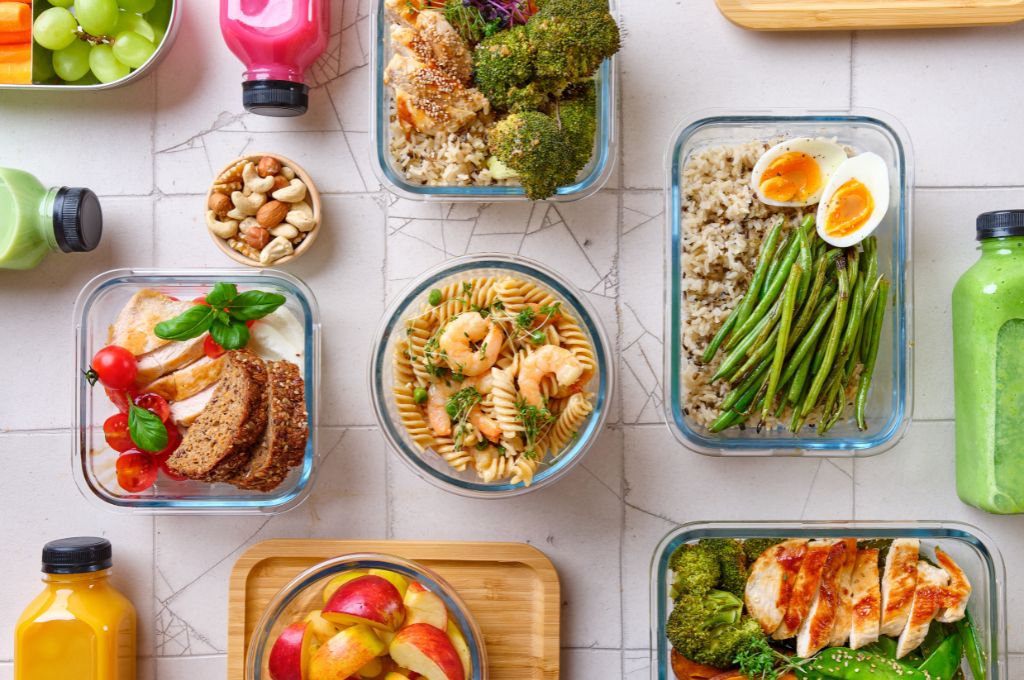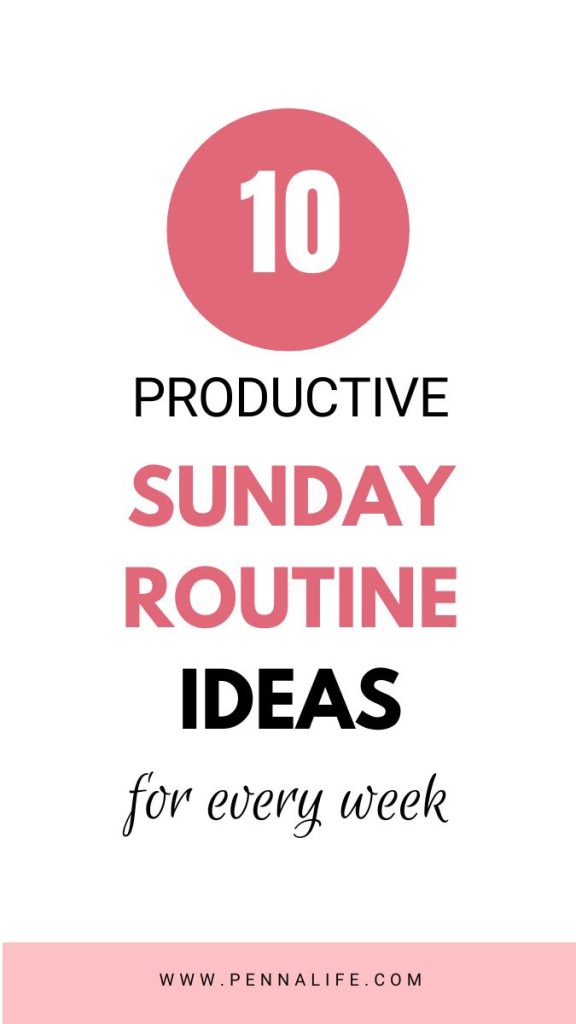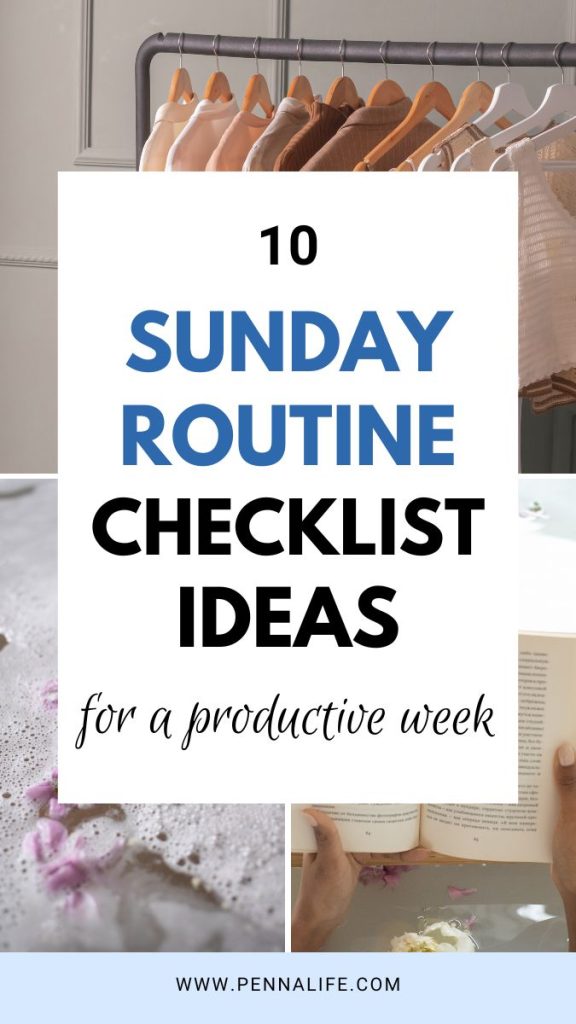This is the ultimate Sunday reset checklist you need for a successful week.

We’ve all felt it—that subtle wave of anxiety that creeps in on Sunday afternoon as the reality that “tomorrow is Monday” settles in.
But what if Sunday could become less about ending the weekend and more about mindfully preparing for the week ahead?
What if you could start embracing every new week with preparedness and purpose?
This is what having a Sunday reset checklist can do for you. In this guide, you’ll learn how it works and awesome Sunday reset routine ideas to help you prepare for the upcoming week.
Why a Weekly Reset Routine Matters?
Weekly reset routines aren’t a list of tasks to add to your to-do list but rather a simple approach to easing the transition between rest and productivity.
Transitional routines help our brains shift gears more smoothly. When we create gentle rituals around these transitions (from a weekend to a busy work week), we prepare our minds and structure our lives for what’s ahead.
As Sundays are positioned at the week’s end, they offer a natural pause point to rest, reflect, and move forward.
A thoughtful Sunday reset routine encourages mental space, wellness practices, and goal-setting. It also helps you to do the following:
- Reduce Monday morning stress
- Be more organized and productive
- Feel a sense of control and calmness throughout the week
Looking for more productivity tips for a new week?
10 Best Sunday Reset Routine Ideas
This Sunday reset checklist is not a list you must complete, but rather a menu of options to choose from based on what serves you best.
Here’s a collection of 10 activities to consider for your reset routine.
1. Weekly Reflection

Find a cozy corner, with your favorite tea or coffee, and review the week that’s passed.
This self-reflection exercise isn’t to criticize yourself, but to honor your progress and find opportunities for growth. To do this, pull out your daily journal and write about what comes to mind:
- What moments brought you joy? Maybe it was a presentation at work, sharing lunch with a colleague, or simply taking breaks when you needed them.
- What situations felt challenging? Here, don’t dwell on what went “wrong.” Instead, focus on what these challenges taught you. Perhaps you discovered you need more boundaries around your time or that you feel calmer with more structure in your mornings.
2. Setting Intentions
Go beyond the traditional way of creating to-do lists. Instead of just listing tasks, close your eyes for a moment and envision how you want to feel as you move through the week.
Do you want to feel energized? Creative? Peaceful? Write these feelings down in your daily planner.
Now, think about what would help create those feelings. This can be taking more breaks at work or setting aside quiet time in the mornings before emails take over. You can also use morning journaling prompts to set intentions for every day.
Choose 2-3 priorities (from what you’ve listed) that align with your desired feelings—not just work tasks, but things that matter to your overall wellbeing. These intentions help you make decisions that serve your bigger picture rather than just reacting to whatever comes your way.
3. Mindfulness Practice
Finding moments of stillness in a busy world is a radical act of self-care. Yes, only 10 minutes of mindfulness can shift your vibe from clinging to past and future worries to focusing on the present.
Arrange a quiet, comfortable spot and practice mindfulness techniques. It could be as simple as sitting quietly and following your breath, embracing your feelings, or journaling for mental health.
You can also find peace in gentle movements, like walking mindfully around your neighborhood, noticing the play of sunlight through leaves, or the sound of birds.
4. Organizing Your Space

Light tidying can create mental and physical space.
Start with what you can see. Clear your kitchen counters of unnecessary items, straighten the pillows on your couch, and put away those shoes by the door.
Also, focus on the spaces that impact you most. This can be your desk where you’ll work during the week or your bedside table that you see first thing each day. Keeping a tidy space creates an environment that feels welcoming and supports productivity.
5. Work Preparation
To prepare for work, begin by organizing your home office and creating a clutter-free space.
Preparing my workspace is one key thing I do during my two-hour productivity sprint to get more work done in a day. Your workspace—which might be a dedicated home office, a corner of your dining table, or a desk somewhere else—sets the tone for your productivity throughout the week.
You can prepare for work by doing the following:
- Spending 15 minutes in your email inbox, flagging what needs attention first thing on Monday.
- Disposing of your trash can and cleaning the room
- Organizing books on shelves and filing away loose papers in cabinets
- Putting your laptop on a stand and your favorite pens within easy reach
- Sorting through physical papers and grouping them by priority (to action, to file, to recycle)
- Checking that your tech essentials are charged and ready
Consider adding a small element that will make you smile. This can be a new notebook, scented candles, an air freshener, lighting, or flower pots.

free printable
The 90-Day Habit Tracker
Grab this tracker and finally stay consistent. With this one simple guide, you’ll see your progress, stay motivated, and build routines that actually last.
6. Laundry & Outfit Planning
Personally, I do my laundry on Saturday since it wears me out. Then, outfit planning happens on Sunday. But if you can do both and still feel like a Power Ranger, get on with it. The core thing is to keep your clothes and bedding clean and organized.
Start with clothing items that make you feel confident and comfortable. They can be light work clothes, home outfits, gym wear, and everyday favorites.
Assessing your wardrobe needs for the week ahead not only saves time but also gets rid of decision fatigue when you’re just starting each day.
7. Meal Planning & Food Prep

If you think proper nourishment and a busy week are two parallel lines that can’t meet, you need this Sunday reset routine idea like yesterday.
Think about nourishing yourself this week and the role your work schedule will play.
- What should your grocery list include?
- What homemade meals would make your busy Tuesday evening easier?
- Which nights will you need quick, easy meals?
- What basics (like cutting veggies, portioning fruits, or cooking a batch of quinoa) can you prepare for quick meals during the week?
- When might you have time to cook something you really enjoy?
You can create a healthy meal plan that relieves you of (1.) the stress of “what to eat” and (2.) the boredom from eating the same thing because you have no time to cook a proper meal.
And, no. You don’t need to plan every single meal. Just deciding on 3-4 dinners can dramatically reduce stress. Even 30 minutes of meal prep can save hours during your week and make healthy choices more accessible when time is tight.
8. Self-Care Space
Sundays are your permission slip to slow down and lavish some attention on yourself.
You could treat yourself to a DIY manicure, a relaxing bubble bath, a mini spa session at home, or some indoor artist date ideas to boost your creative energy.
To enjoy your self-care time, you can light some scented candles, play soothing music, sip wine, and try not to worry about the new week.
9. Calendar Review
Review the upcoming week for any important dates or meetings.
- What fixed commitments do you have?
- How much would these calls or events affect your goals?
- How can you show up in the best way to these commitments?
Notice any potential stress points. For example, days with back-to-back meetings or important deadlines. Then, identify simple ways to support yourself through these moments. Maybe you need to block out lunch breaks, wake up earlier than usual, read up some materials, or create buffer time between calls.
10. Rest & Relaxation

This is perhaps the most important part of your Sunday reset. True, intentional rest.
So, create a morning or nighttime routine for Sunday reset that is dedicated to rejuvenation. It could be an hour reading an epic fantasy book in your favorite chair, a long bath with essential oils and soft music, or simply lying on a couch bingeing your favorite drama series on Netflix.
Give yourself full permission to do nothing but relax. Spend quality time with yourself because wellness, productivity, and creativity all stem from proper rest.
Making Sunday Reset Routines Work For You
Resetting to start your weekly schedule is great, but your routine should fit your life, not the other way around. Here are some tips to make your Sunday reset checklist work for you:
- Consider your natural energy levels on Sundays
- Work around family commitments or irregular schedules
- Don’t fall into comparison traps (social media is full of elaborate reset routines. What works for someone else might not work for you)
- Review your available time and resources
- Choose activities that genuinely help you feel prepared and peaceful
- Adapt the routine to your living situation (do you live solo, with family, with roommates?)
- Be flexible (some Sundays will be full of other activities, and that’s okay)
For example, if you have toddlers, your reset routine might happen in small portions throughout the day. Or if you work on weekends, you can choose another day as your transition point.
quick note
The point of the Sunday rest checklist isn’t to cram all household chores into one day. It’s to pause and prepare for the week ahead. So, choose just a few key activities that make the most impact.
In Summary: Creating a Sunday Reset Routine Checklist
Start small with a few activities that feel most supportive to you. Over time, you might find yourself naturally adding more things as you discover what helps you feel most prepared and peaceful.
Sunday reset is a practice in self-care and intentional living. By taking a day to prepare for the week ahead, you’re setting yourself up for a more balanced, peaceful, and productive life.
Looking for more routine checklist ideas?








